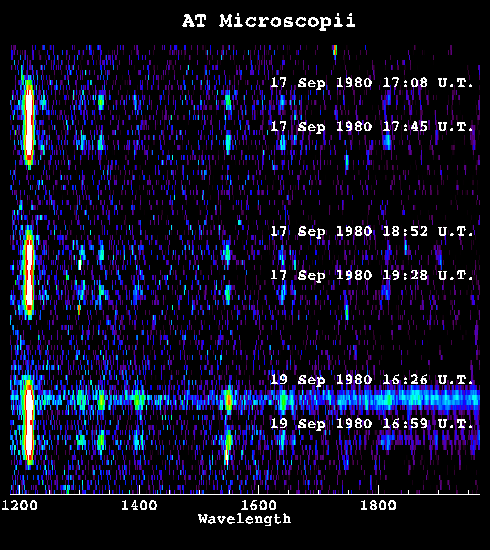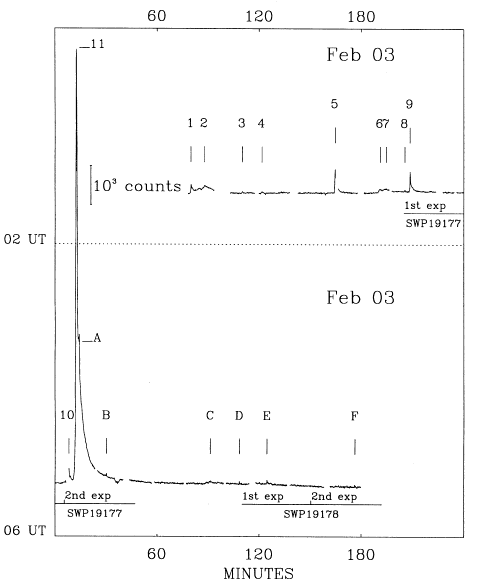

Stars of many different types are known to undergo flares at all wavelengths, characterized by a rapid flux increase and a slower decay. Active M dwarfs (the so-called dMe stars) show flares similar to solar eruptions.
The X-ray coronae,chromospheric activity, starspots and flares on dMe stars can be viewed as solar-type magnetic phenomena, exagerated by the fully convective interior structure of low-mass stars.
We present below examples of IUE observations of two flare stars, AT Microscopii and YZ Canis Minoris.
AT Microscopii is a visual binary star, located aproximately 9 pc from the Sun. Both components are of spectral type dM4.5e and subject to flaring.
The figure shows the IUE Short Wavelength spectra of AT Mic taken in September 17 and 19, 1980. Due to the short duration of the flares, a special technique was used in order to improve the time resolution: two spectra of 30 minutes each where obtained consecutively with the star placed at two different positions along the spectrograph large aperture.

There was no evidence for flares during September 17. On the first spectrum of September 19 a clearly enhanced emission was seen in both lines and continuum, while the second one is still enhanced but less intense.
In the flare spectrum the emission lines are a factor seven stronger than in quiescence. During quiescence state, the UV lines in AT Mic are 10-40 times stronger than in the quiet Sun. The energy emitted by AT Mic during the flare is roughly 104-105 times that of a solar flare.
YZ Canis Minoris is also a dM4.5e star. It was observed with IUE in February 3 1983, using the same technique as described above for AT Mic.
The first spectrum appears rather quiescent, while the second one is strongly affected by a large flare (of magnitude 3.8 in the U band). In the other spectra only the CIV line at 1550 A is barely visible. The intensity of the CIV 1550A and HeII 1640A emission lines increased during the flare by factors of 5 and 6, respectively.
This in one of the few flares of this star which was detected in ultraviolet, optical and radio, at 6 cm.

Complete U-band light curve of
YZ CMi on February 3 1983. Numbered verical bars indicate flare
events, and horizontal lines indicate the time intervals of IUE
exposures.
From
van den Oord at al. (1996) Astron. Astrophys. 310,
908

Do you want to know more about the IUE observations of ATMic and YZ CMi ?